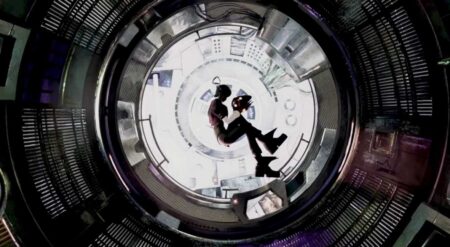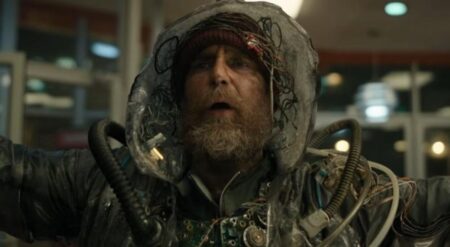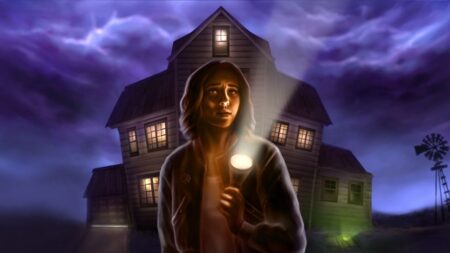
Josee, The Tiger and The Fish is an animated drama based on the 1985 short story written by Akutagawa Prize-winning author Seiko Tanabe, the film is animated by studio BONES, directed by Kotaro Tamura, and features a screenplay by Sayaka Kuwamura. A story about love and finding yourself, Josee, The Tiger and The Fish is a film that has a power in its story, but more importantly, its ending. We got the chance to talk with Director Tamura about the film, the importance of disabled representation in animation and film, and how Josee, The Tiger and The Fish came to life.
BUT WHY THO: Josee, The Tiger and the Fish is one of a few adaptations of Seiko Tanabe’s writing, it’s also the only one suitable for all ages. Why did you decide to make it a feature that is accessible to all ages?
KOTARO TAMURA: I hadn’t planned to make it for all ages at the start. It’s more like it turned out that way as I was working out the plot. I was aware of the recommended age range of the original story. Most animation in Japan depicts adolescents from around 12 to 18 years old. But Josee is 24 and Tsuneo is 22, so they’re young adults. They’re adults by age, but it’s hard to say that they stayed at home or in school and then fully entered society. I wanted to weave the themes of the story into that ambivalent period in their lives.
The original story does include depictions of sexuality to show the culmination of their relationship, but it doesn’t really add to the drama at all so I left it out of the film. I didn’t consider it taboo just because it’s anime, though. In animation today, there still aren’t many stories that deal seriously with people in wheelchairs. There aren’t many that deal with sexual motifs, either. I thought the movie might appear too unorthodox if I tried to combine both of those things. Representation can only take the next step forward once a genre has matured. I hope we start to see more stories dealing with wheelchairs in the future, and I intended Josee to build a foundation for that to happen.
BUT WHY THO: What was one of your favorite scenes to direct in the film and why?
KOTARO TAMURA: One scene where I really wanted the characters’ emotions to come through is when Mai talks to Josee from the other side of the door. Their intentions and their actions are all mixed up in that scene, so some viewers might come away with a bad impression of Mai. Up to that point, Mai and Josee hadn’t said much to each other in the film, but I wanted to show there is a kind of trust between them, something similar to friendship because they both like the same person. It is a love story, but I believe I was able to make the movie a little deeper by showing something that went beyond just the workings of male-female relationships.
BUT WHY THO: They each seem to have their own color palette and identity visually, which come together in the third act. It’s clear how different the characters are just by looking at them and the world around them. How did you craft the stark differences between Josee’s world and Tsuneo’s?
KOTARO TAMURA: It’s a common trope in “boy-meets-girl” stories for two people who have nothing to do with each other to cross paths and be introduced to a new world. That’s emphasized even more in this movie because Josee is in a wheelchair. Once their backgrounds and personalities were set in the plot, the differences in their appearance came naturally.
Tsuneo wears the “silhouette” style of clothes that’s popular today, but he lives really cheaply so his wardrobe is as basic as you can get. He also likes to go diving, and for a researcher he dresses pretty sporty. The watch he’s wearing is a dive computer. Josee dresses like a daydreamer, a little childish, but gradually gets more stylish after she meets Tsuneo. Her short bangs let her clearly show her expressions, and she changes her hairstyle depending on her mood. You should notice her earrings at the end too. Neither one of them are wealthy, so we had them cycle through the same clothes.
BUT WHY THO: Were there scenes that were harder or more emotional to direct than others?
KOTARO TAMURA: I struggled with the scene where Josee visits Tsuneo at work for the first time when storyboarding. The music there isn’t emotional and the colors are very plain. It just looks like a normal day where nothing special happens, but it becomes a really important turning point for the story. We needed the viewers to be able to understand Josee, Tsuneo, and Mai’s state of mind better than the characters themselves.
BUT WHY THO: Do you relate to any of the characters in the film and why?
KOTARO TAMURA: I feel like of all of the characters are parts of me, but if I had to pick just one, it’s probably Mai. I think about how she must have felt when she was deceiving herself for the sake of the person she liked. Her behavior might appear to be hypocritical from the outside, but to her it makes sense.
BUT WHY THO: What do you hope people feel or think when the film ends?
I always felt that disabled people in stories are usually burdened with tragic roles. They still must have their own unique perspectives on life, so why aren’t there more stories that talk about their hopes and dreams? In this movie, instead of dwelling on a disabled person’s physical limitations, I wanted to put the emphasis on her freedom of spirit. I’m sure that even so-called able-bodied people would be able to empathize with someone like that. Nobody really thinks that they’re totally “complete” anyway, so in that sense we are all Josee.
When we talk about the best animation of 2021, we need to talk about Josee, The Tiger and The Fish. Released in July by Funimation in the United States, this is a feature film I can’t wait for folks to stream at home. A beautiful story about growing a connection with someone and also growing outside of it, this a film that brings beauty and heart in spades.


![[EXCLUSIVE] Palia Devs Dive Into Winterlights, New Tints, Lunar Paths, And More From Upcoming Patch Palia Winterlights Patch](https://butwhytho.net/wp-content/uploads/2025/12/Palia-Winterlights-But-Why-Tho-450x247.jpg)



